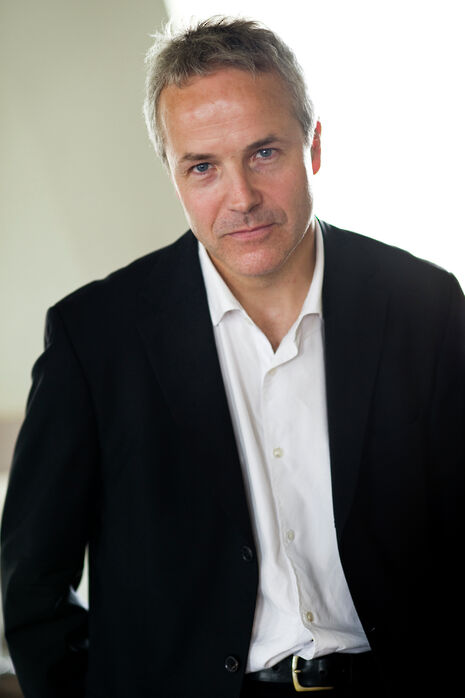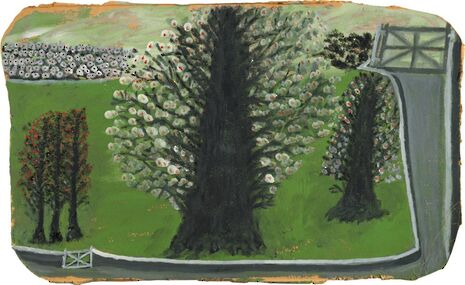In conversation with Andrew Nairne
Celebrating their 50th anniversary this year with an array of exhibitions in different venues across Cambridge while the gallery is renovated, Danni White speaks to the Kettle’s Yard director about his vision for the gallery

Entering the temporary offices for Kettle’s Yard, I was introduced to the gallery's director, Andrew Nairne, dressed in a grey suit and perched on his assistant’s desk, with a huge amount of curiosity in his eyes. After recovering from his lively greeting (“Have you ever been to Morocco? I’m trying to find a house!”) I was offered a seat on a chair from the Kettle’s Yard museum. The site is undergoing an exciting new extension and the development will leave Kettle’s Yard closed over its 50th anniversary.
The first thing I asked Nairne to do was to clarify what Kettle’s Yard is. Most students will have heard of it, if not visited the house and gallery, but it is an unusual space: part house, part curated art paradise, where works of art sit alongside objects like carefully arranged pebbles.
Nairne describes Jim Ede’s vision as a “democracy of display”, where each piece is given equal value, be it pebble or painting. He spoke of the house as “an artwork in its own right [...] full of extraordinary juxtapositions”, but believes it is more than a display. People seem to love the space and light in the house as much as the art. To sit at a writing desk in the hallway to Ede’s bedroom, facing a wall, Nairne describes it as a “place of catharsis, where your senses are sharpened and you can relate even more clearly to the outside world”.
From the house, three small galleries were built in the 1970s, which have played host to wide-ranging series of contemporary and modern art, as well as displays from the Kettle’s Yard archives. It is these galleries that are being rebuilt, adding a café, an education wing and new gallery space.
“The way we are thinking about our exhibitions programme when it reopens, is not a cosy little world of art appreciation”, he tells me over peppermint tea. “We are trying to be connected and relevant through the interests and actions of artists”.

I know Nairne worked for Kettle’s Yard before leaving to work with big name artists nationwide, and I ask him what made him come back here. “I was working at Arts Council England before this, who fund a lot of public spaces. I was there for three years and discovered I enjoy policy and strategy, but I also need to be close up and involved to make change happen, and this opportunity came along.”
I asked what Oxford-born Nairne’s connection to the city of Cambridge was. Despite the fact he has no ‘real’ connections, he loves the city and is “very proud to be part of the University: if you’re going to be part of a university, why not one of the best universities in the world?”
He has had plenty of time to get to know the city over the five years he has been director, so we began talking about how Kettle’s Yard had evolved in that time. “It's been very focused on the building project. The simple way of putting it is, I’m trying to create the Kettle’s Yard that I want, down to the exact design of the door handles, so I’m making it for me, and hopefully other people are going to like it too. The shop, the café, everything should follow Jim Ede’s vision, and that’s why I’m fighting so hard for these door handles, to make sure the new parts of Kettle’s Yard are far from corporate. It needs to feel personal and in keeping and have that level of detail and thought about it. It’s William Morris’ principles: it has got to be beautiful, or useful, or both.”
During the talk of modern design, I was wondering out loud why Kettle’s Yard is so important to a university that doesn’t typically focus on modern art. “That’s a very scientific question”, he replied. “I think we need to do more work to make every student aware of Kettle’s Yard in the first place. The Fitzwilliam Museum is an extraordinary palace of treasures but Kettle’s Yard is something different. It gives Cambridge the edge in a way, because of the nature of the house. You ring a doorbell to be let in, you’re greeted, and you can walk around the space, sit in the chairs and relax. It’s a very different prospect. Ede loved the atmosphere of Cambridge colleges, but really believed the students needed a retreat, and this would be that space to go with a book. Every university should have a Kettle’s Yard.”
I thought it might be a big change for Kettle’s Yard to go from one site to a city-wide series of exhibits, but Nairne excitedly leant forward in his chair to tell me about the new projects. “When you take the objects out of the carefully created space and put them somewhere else, on one level you break the magic, but on another we have a chance to see those artworks in a very different context. One of the things we are discovering is that Ede had a great eye for art, and it will be great to see that in a traditional white-walled gallery space. It’s refreshing. The obvious answer is: people are missing Kettle’s Yard, and we didn’t want to hide the art in a store in London.”
That led me on nicely to ask about the 50th anniversary of Kettle’s Yard: the gallery and house will be closed, and the locations of the new exhibits reach far across the city. I wanted to know how Nairne considered town as well as gown, given the history of tension. “From our point of view on Castle Hill, there’s a whole area of the city with a diverse community, that don’t automatically come in and wonder around the University museums. We are working with them to give them creative opportunities they wouldn’t necessarily have had. In a way, I want both town and gown to gain opportunities from each other, particularly with the new building.”

I was very pleased to hear this, as someone that straddles the boundaries between both, but I wondered if he was concerned he wouldn’t get the same footfall as he might near the historic centre. “This is very true, we have had to find additional resources and energy to work in North Cambridge, but we are still the Kettle’s Yard concept, and at the heart of that, it is about life, art and creativity. We are excited by the thought that new audiences might come to the new building in the future […] and like the new door handles.”
It strikes me that Nairne is interested in keeping the ‘conversation’ of Kettle’s Yard alive, and is participating in something special. My final question to him was to ask him what he thought was the potential for the new additions. “For me, Kettle’s Yard as a masterpiece itself is becoming more important every day. I meet so many people who love the place, and they aren’t just excited about a single artwork, but the feeling of the space. It seems worth trying to understand that. When we reopen, we can do a wonderful programme around the feeling of the house better than we have been able to in the past. We now have the mechanisms to elevate the gallery to the level of the house”
 News / Caius mourns its tree-mendous loss23 December 2025
News / Caius mourns its tree-mendous loss23 December 2025 News / Clare Hall spent over £500k opposing busway 24 December 2025
News / Clare Hall spent over £500k opposing busway 24 December 2025 Comment / The ‘class’ of Cambridge24 December 2025
Comment / The ‘class’ of Cambridge24 December 2025 Comment / Yes, I’m brown – but I have more important things to say22 December 2025
Comment / Yes, I’m brown – but I have more important things to say22 December 2025 Interviews / Politics, your own way: Tilly Middlehurst on speaking out21 December 2025
Interviews / Politics, your own way: Tilly Middlehurst on speaking out21 December 2025







